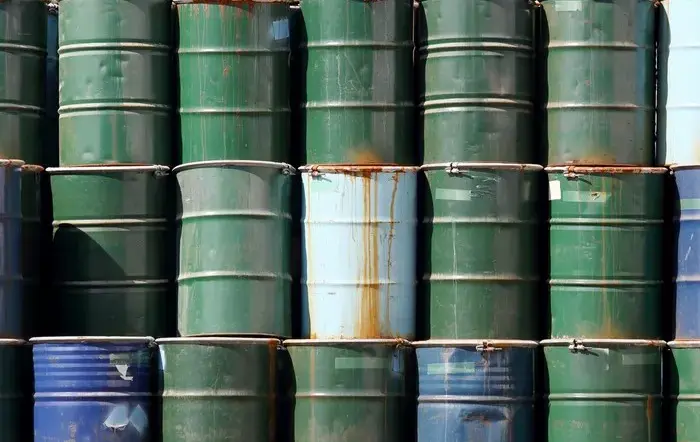Crude oil is a vital resource in the modern world. It fuels our cars, heats our homes, and is a key ingredient in countless products. The process of refining crude oil has a rich history, dating back centuries. This article explores the origins of crude oil refining, the evolution of refining techniques, and its impact on society and the economy.
Understanding Crude Oil and Its Importance
What Is Crude Oil?
Crude oil is a naturally occurring liquid found in geological formations beneath the Earth’s surface. It is composed of hydrocarbons and other organic materials. The properties of crude oil can vary greatly depending on its source, leading to different types of crude oil.
The Importance of Crude Oil
Crude oil is crucial for various reasons:
Energy Production: It is a primary source of energy for transportation, heating, and electricity generation.
Manufacturing: Crude oil is a key raw material for producing plastics, chemicals, and pharmaceuticals.
Economic Impact: The oil industry plays a significant role in the global economy, affecting employment, trade, and geopolitics.
Understanding the significance of crude oil helps us appreciate the importance of its refinement process.
The History of Crude Oil Refining
Early Uses of Crude Oil
The use of crude oil dates back to ancient civilizations. Historical records suggest that oil was used for various purposes, such as:
Lighting: Ancient Egyptians used oil to fuel lamps.
Waterproofing: Oil was used to seal boats and buildings.
Medicinal Purposes: Ancient cultures utilized oil for its therapeutic properties.
While these early uses did not involve refining in the modern sense, they laid the groundwork for future advancements.
The First Refining Processes
The concept of refining crude oil began to take shape in the mid-19th century. Here are key milestones in the history of crude oil refining:
1. The First Distillation
Date: The first crude oil distillation is believed to have occurred in 1850.
Location: It took place in Pennsylvania, USA, where the first commercial oil well was drilled in 1859.
Process: The crude oil was heated, and the vapors were collected and condensed to separate different components.
2. The Invention of Kerosene
Date: In 1854, the first kerosene was refined from crude oil.
Inventor: Abraham Gesner, a Canadian geologist, is credited with developing a process to produce kerosene from coal and later from crude oil.
Significance: The widespread use of kerosene as a lighting fuel led to increased demand for refined oil products.
3. The Birth of the Modern Oil Industry
Date: In 1861, the first commercial oil refinery was established in Pithole, Pennsylvania.
Growth: The success of this refinery marked the beginning of the modern oil industry, prompting the construction of more refineries.
The Rise of Refining Techniques
As the demand for refined products grew, so did the techniques used for refining crude oil. Key developments included:
1. Fractional Distillation
Overview: This process involves heating crude oil and separating it into different components based on their boiling points.
Implementation: By the late 1800s, fractional distillation became the standard refining method, allowing for the production of gasoline, diesel, and other valuable products.
2. Catalytic Cracking
Date: Developed in the early 20th century, catalytic cracking revolutionized the refining process.
Function: This method uses a catalyst to break down large hydrocarbons into smaller, more valuable products, significantly increasing the yield of gasoline.
3. Hydrocracking
Overview: Introduced in the 1940s, hydrocracking combines hydrogen with heavy crude oil to produce lighter, more desirable products.
Impact: This process improved the efficiency of refineries and allowed for the utilization of heavier crude oils.
Major Events in Oil Refining History
Several key events shaped the evolution of crude oil refining:
1. The Discovery of Oil in Texas
Date: The Spindletop oil discovery in 1901 led to an oil boom in Texas.
Impact: This event significantly increased the production of crude oil and, consequently, the need for refining.
2. The Growth of the Automotive Industry
Overview: The rise of automobiles in the early 20th century created a surge in demand for gasoline.
Result: Refineries adapted their processes to produce more gasoline and other transportation fuels.
3. The Global Oil Crisis
Event: The 1973 oil crisis highlighted the importance of oil refining and prompted countries to reevaluate their energy policies.
Changes: This crisis led to innovations in refining technology and the search for alternative energy sources.
The Modern Refining Industry
Current Refining Processes
Today, crude oil refining is a complex and highly efficient process. The key steps involved in modern refining include:
1. Distillation
Overview: Crude oil is heated in a distillation column to separate it into various fractions, such as gasoline, diesel, kerosene, and asphalt.
Process: The lighter fractions rise to the top of the column, while heavier fractions remain at the bottom.
2. Conversion Processes
Types: In addition to catalytic cracking, other conversion processes, such as alkylation and reforming, are used to produce high-octane gasoline and other valuable products.
Efficiency: These processes enhance the quality of refined products and maximize output.
3. Treatment and Blending
Overview: Refined products undergo treatment to remove impurities and improve quality.
Blending: Different fractions are blended to meet specific market requirements and regulatory standards.
Global Refining Capacity
The global refining industry has evolved to meet the increasing demand for oil products. Key aspects include:
1. Major Refining Regions
North America: The United States has one of the largest refining capacities in the world, with a significant number of refineries located in the Gulf Coast region.
Asia: Countries like China and India have rapidly expanded their refining capabilities to meet domestic energy demands.
2. Environmental Considerations
Challenges: The refining process generates greenhouse gases and other pollutants, prompting a focus on sustainability and reducing environmental impact.
Innovations: Many refineries are implementing technologies to capture emissions and improve energy efficiency.
The Future of Crude Oil Refining
As the world moves toward renewable energy, the future of crude oil refining faces challenges and opportunities:
1. Shift to Renewable Energy
Trends: Increasing investments in renewable energy sources and electric vehicles are changing the landscape of the energy market.
Adaptation: Refineries may need to adapt their processes to produce biofuels and other sustainable products.
2. Technological Advancements
Overview: Innovations in refining technology, such as advanced catalysts and process optimization, can enhance efficiency and reduce environmental impact.
Future Focus: The industry will likely continue to evolve, balancing traditional refining practices with emerging sustainable technologies.
Conclusion
The history of crude oil refining is a testament to human ingenuity and the evolving energy landscape. From its early beginnings in the 19th century to the sophisticated processes used today, refining has played a pivotal role in shaping the modern world. As society transitions towards more sustainable energy sources, the refining industry must adapt to meet changing demands while minimizing environmental impacts. Understanding this history provides valuable insights into the complexities of the global energy market and the importance of crude oil in our daily lives.
Related topics:


































